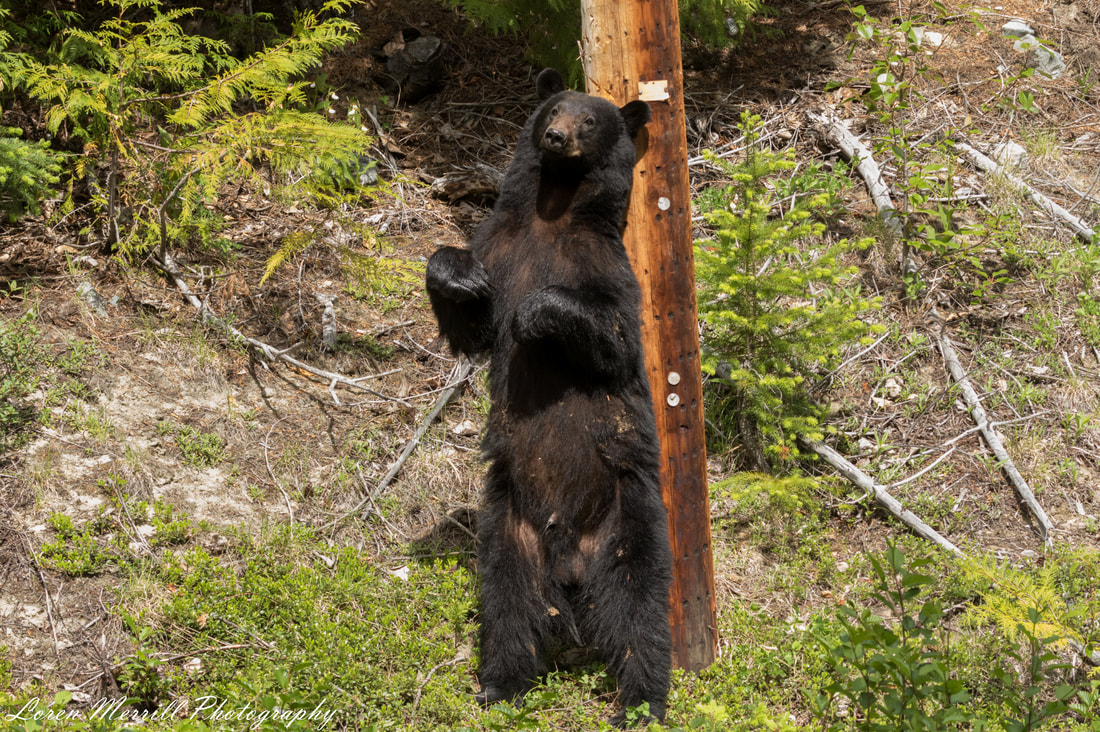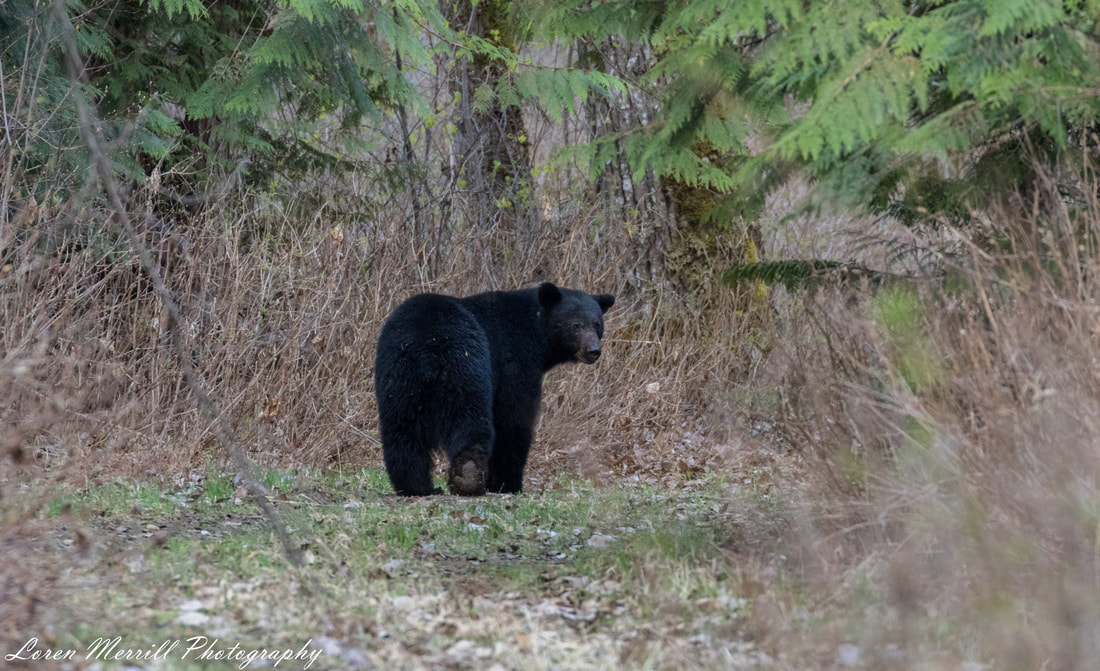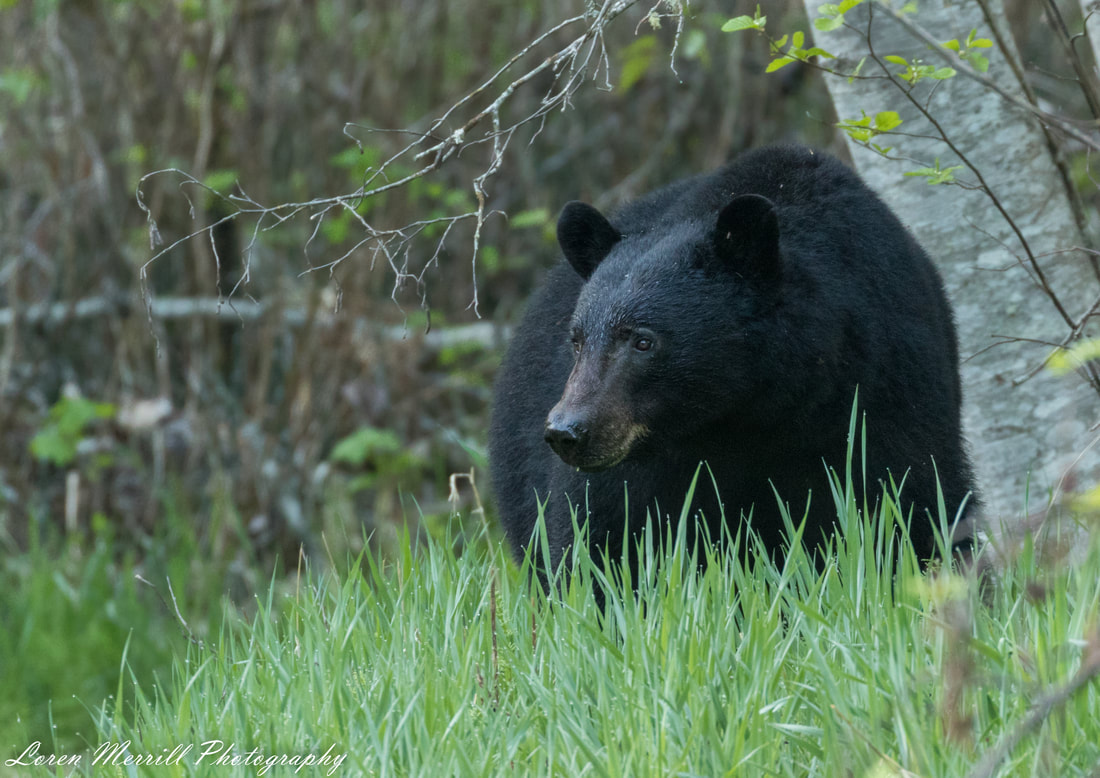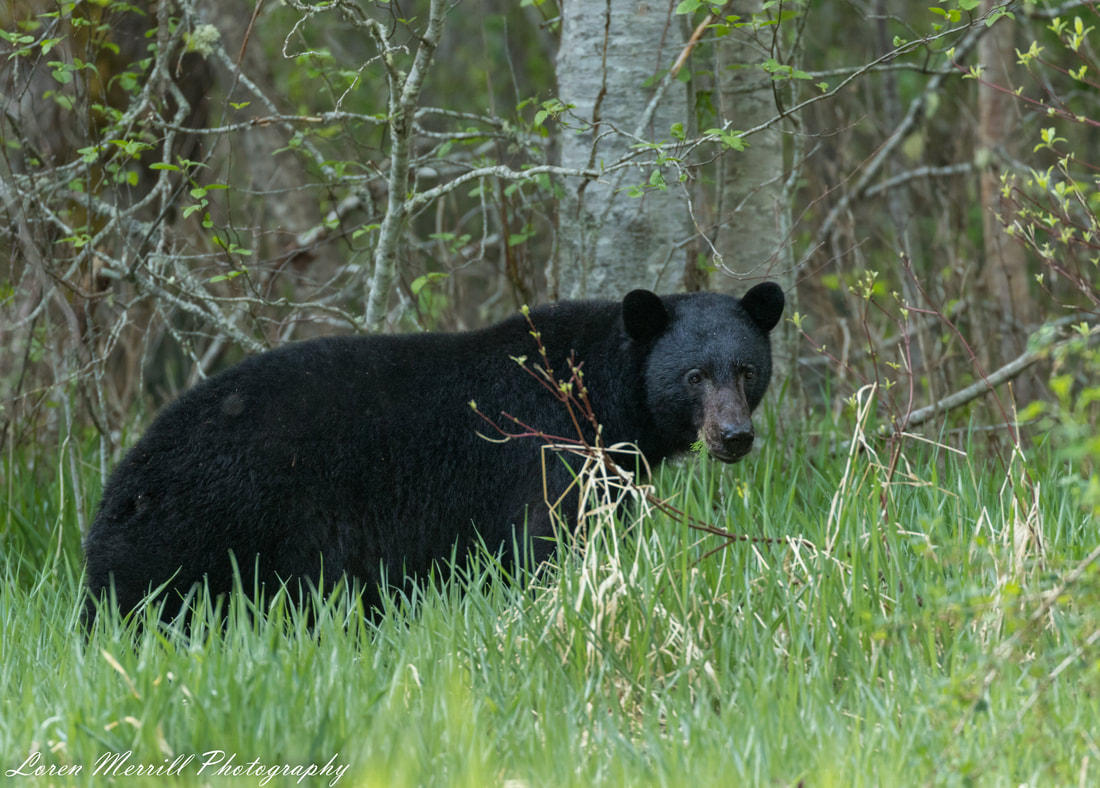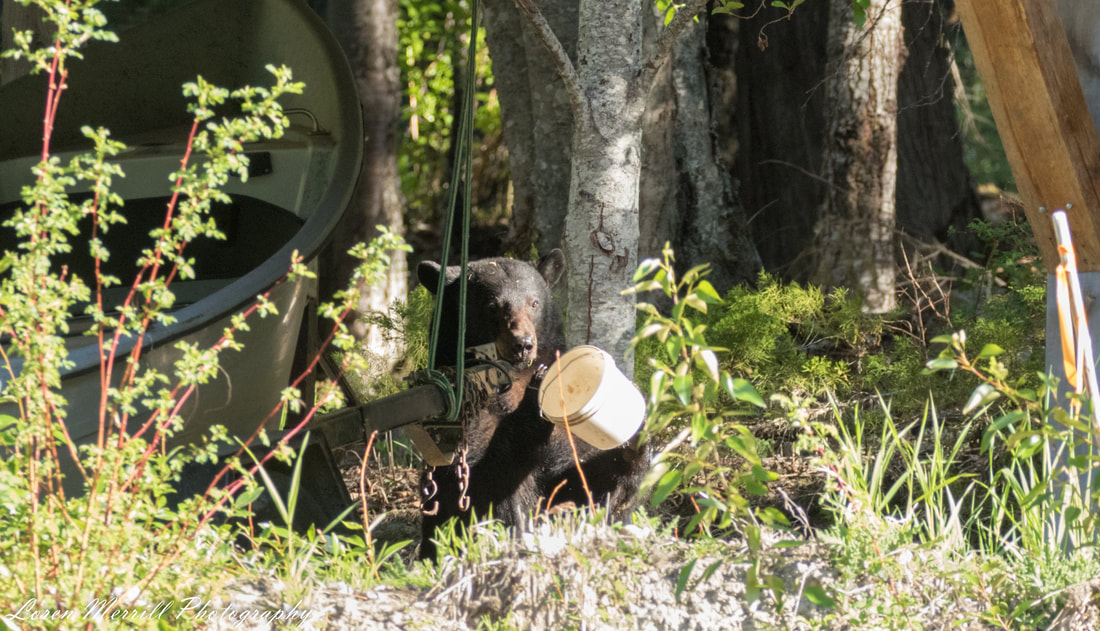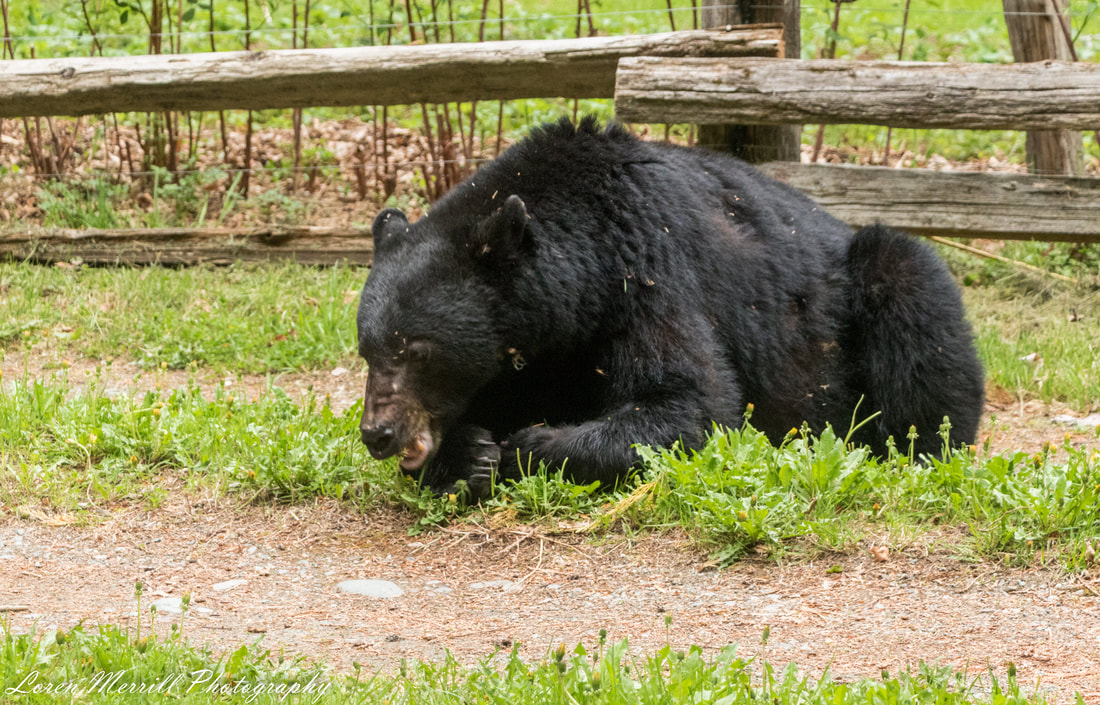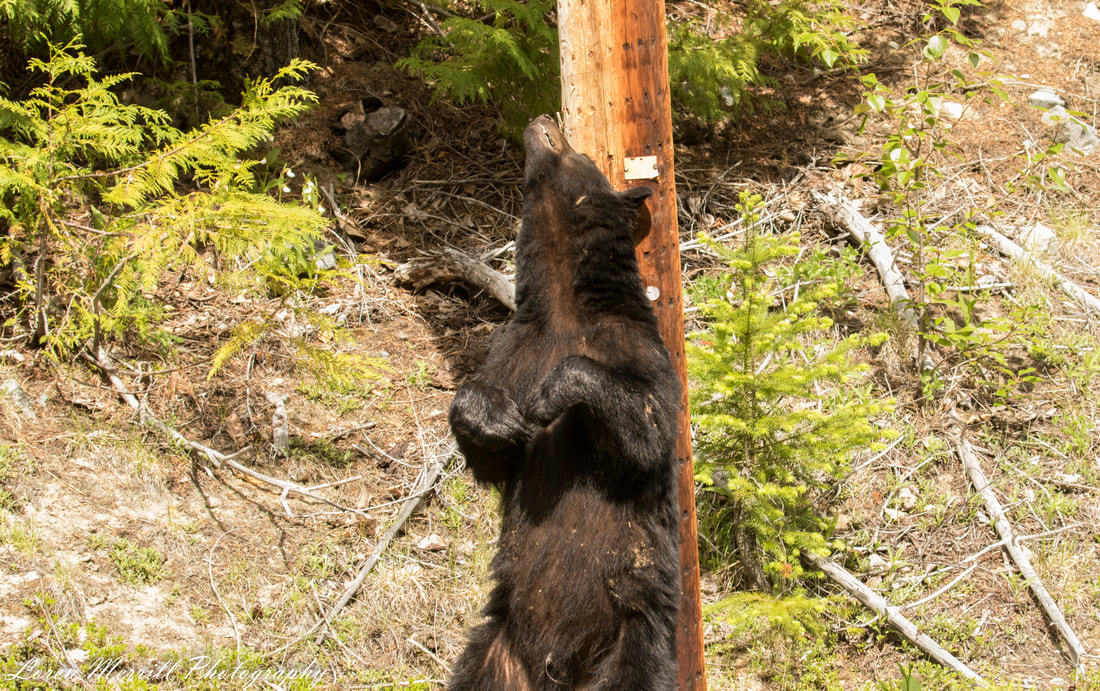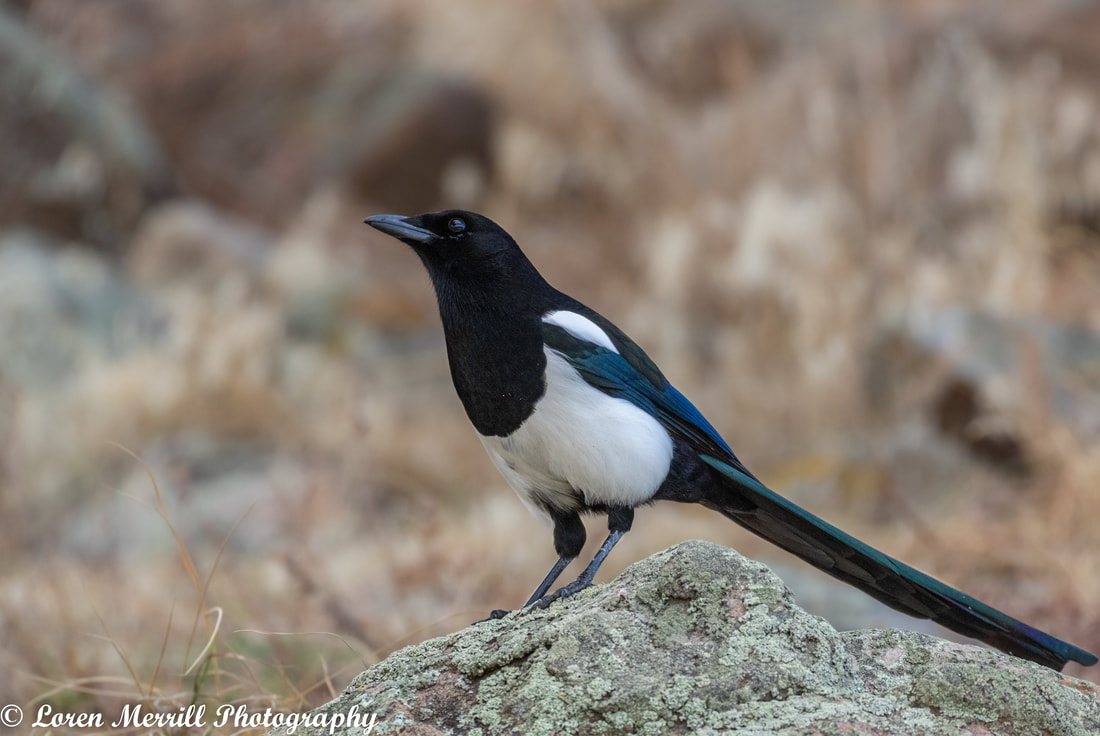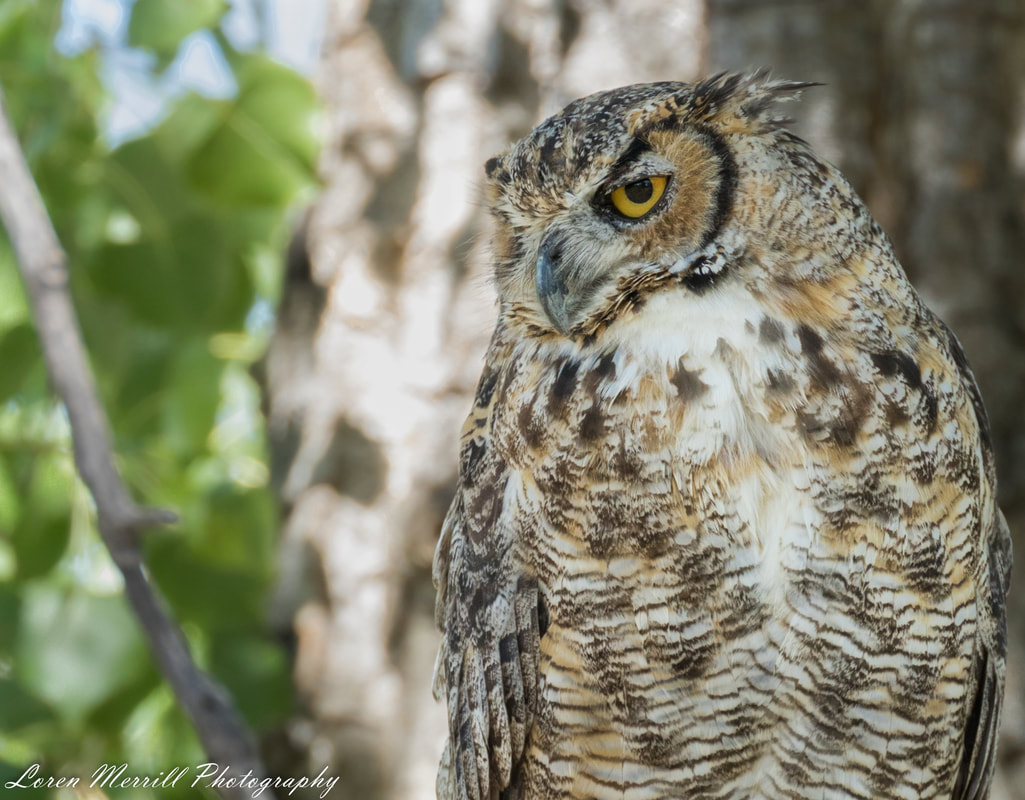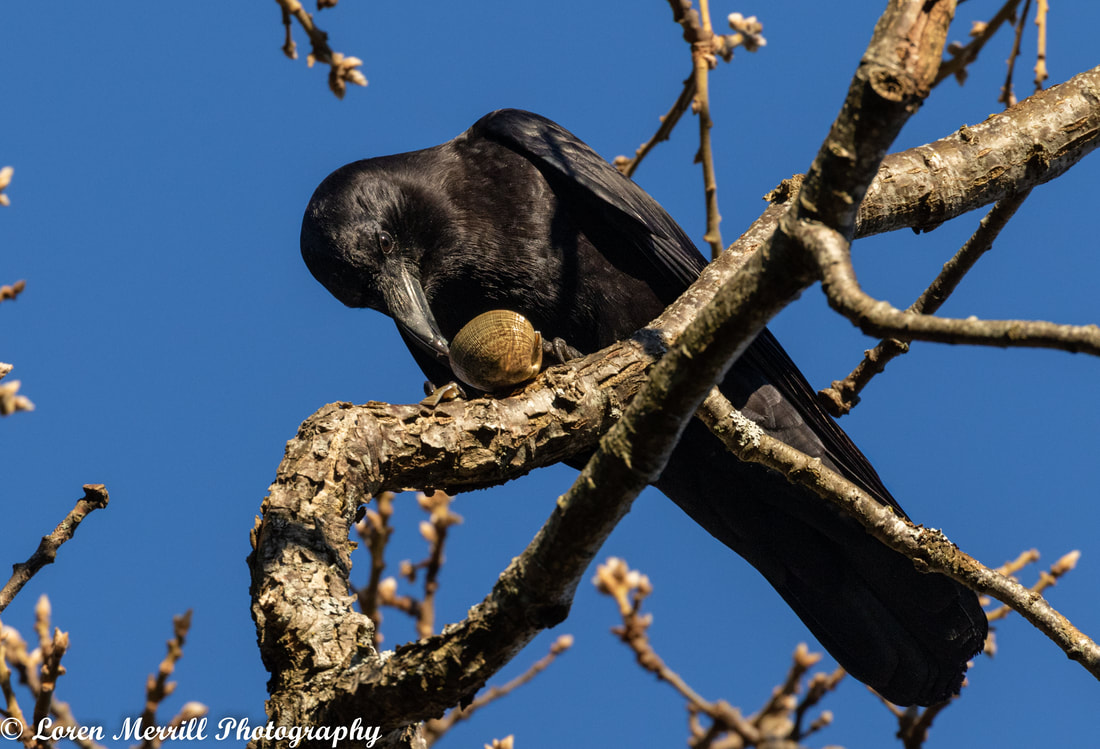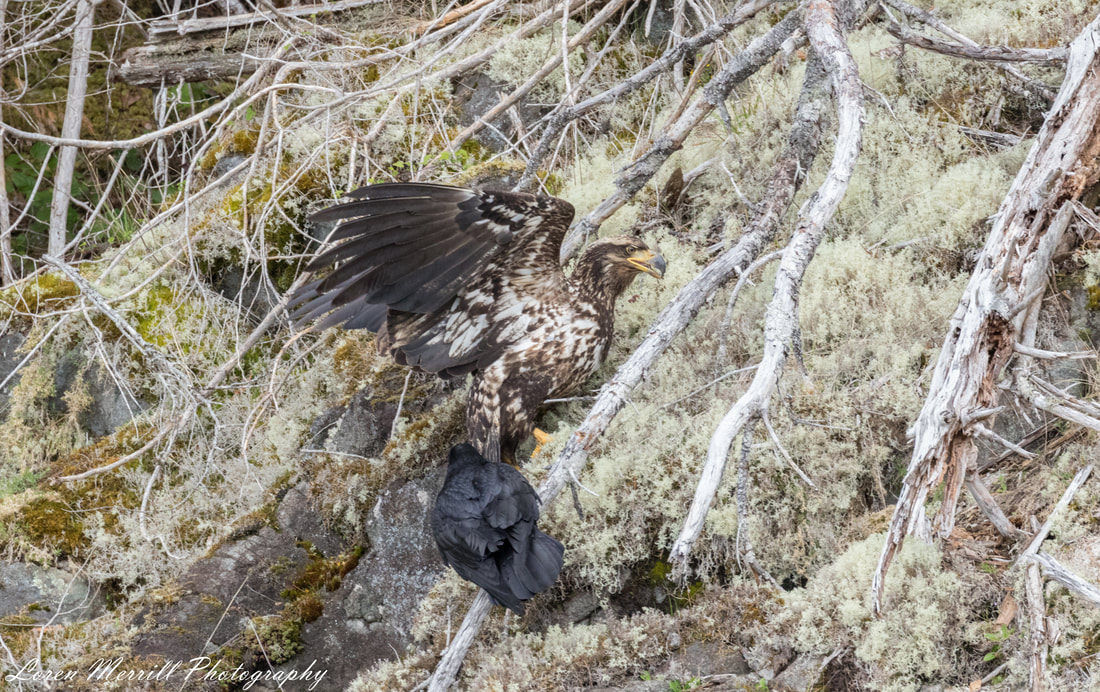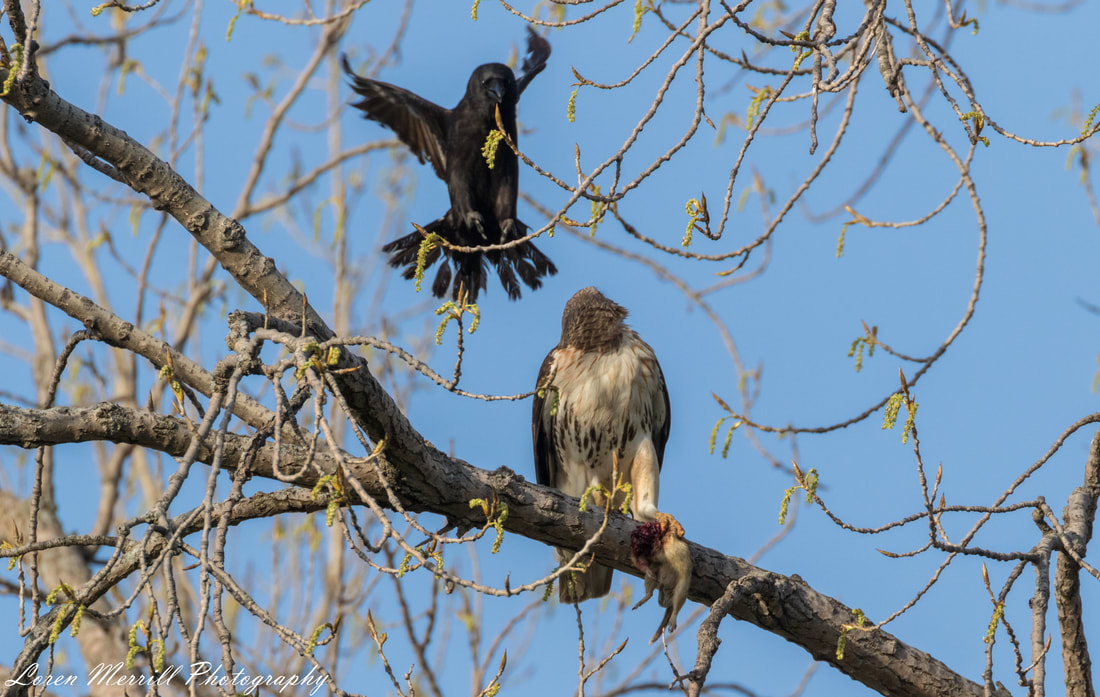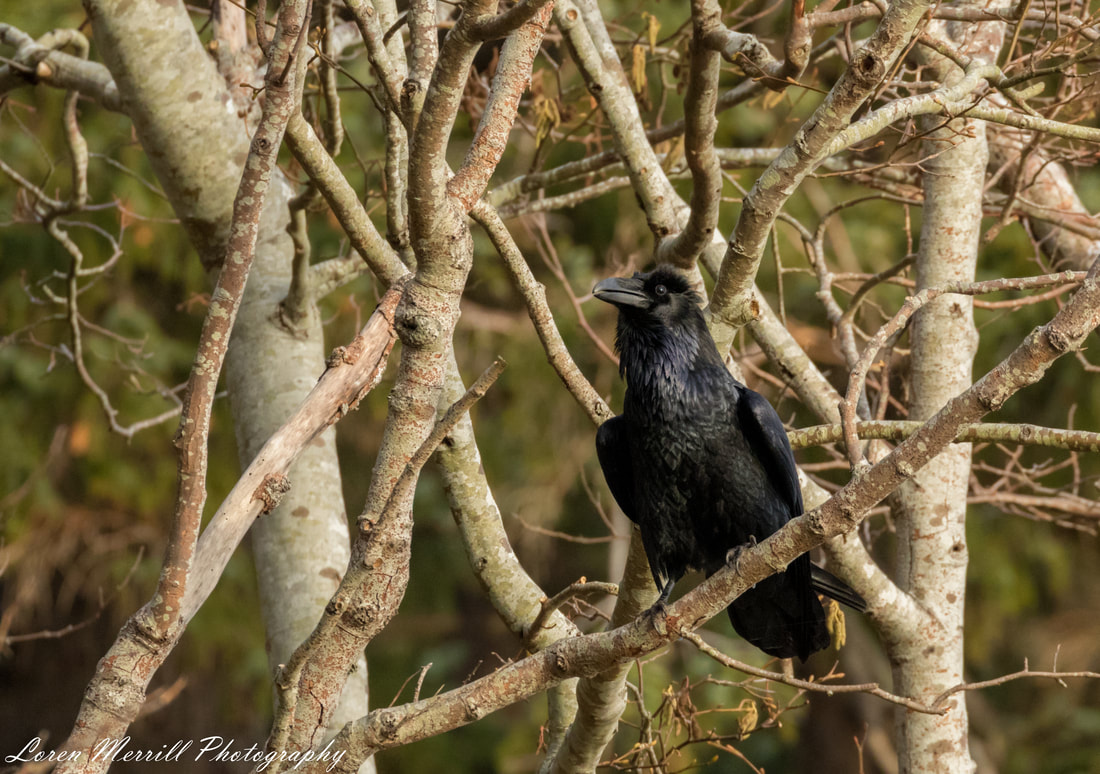|
With Valentine’s Day close in the rearview mirror and the “Decade in Review” fresh in my memory, I’ve decided that this is a good time to devote a full post to one of my favorite wild animals: Albert the black bear. For those not familiar with Albert from previous posts, he was a resident black bear that I got to know in some capacity while my wife and I were living in the Bella Coola Valley last spring. During our six weeks stay there I had many bear encounters (both black bears and grizzlies), but the vast majority ended with the bear running off through the woods. This is not a bad thing, especially in an area that experiences a fair share of human-bear conflict. But my goal when I head out into nature is to observe animals going about their normal business. This can be a real rarity, especially for animals that are/were hunted or that view us as potential predators. What was most rewarding about my experiences with Albert was that he eventually accepted my presence enough so that he seemed to continue with whatever he was doing even when I was around. Through my repeated interactions with Albert I began to get a feel for him as an individual. This was only possible by watching how Albert reacted to various stimuli and observing his morning and afternoon habits. Just as with people and pets, the behavioral profile (or personality) of wild animal comes together over time, and even with my many interactions, I was only able to scratch the surface in terms of being able to paint a picture of Albert. There’s a relatively new discipline devoted to the study of animal personalities, and what’s known more technically as behavioral syndromes. In broad strokes this refers to a suite of related behaviors that an individual exhibits within a specific behavioral context (such as when foraging for food), or across contexts (such as associations between foraging behavior, mating behavior, antipredator behavior, etc.). Consider the birds that visit a feeder in your yard or a neighbor’s yard. A flock of chickadees appears every morning just around dawn, and individuals zip back and forth from the feeder to the nearby stand of trees, opening or caching the sunflower seeds they’ve collected from the feeder. Each bird looks the same to our eyes and they quickly blend together into a generic chickadee. If you were to catch those chickadees and give them unique identifiers like colored leg bands or GPS trackers, behavioral differences would begin to emerge. Some individuals might be bolder than others, visiting the feeder in the presence of a possible predator, pushing others off the feeder when they want access to the seeds, and being the first to explore new feeders that appear in the yard. Others may be shyer, less dominant, and less likely to explore new food sources. That there are differences among individuals probably isn’t surprising to most people, especially those who have owned pets, but what some researchers are finding is that there can be consistency in groups of these behavioral traits. Individuals that are bold early in life often remain bold later in life, and those that are more likely to explore their environment are more likely to have broader social networks, and potentially be more dominant. The point here is that we’re learning a lot about how different individual animals are, and how the behavioral profile of an individual can influence every facet of their ecology. And with respect to Albert, I want to relay a handful of stories about him to provide a sketch of what this bear was like to be around. Our first meeting: Five days into our stay at Madeline Cabin in the Bella Coola Valley, I was out exploring some of the local trails that crisscrossed Katie and Dennis’s property and that of the lodge nearby, when I heard a distinctive crunching sound from the woods off to my left. It was late April, and spring was working hard to reclaim the land from the clutches of winter. Most of the deciduous plants were still covered in hard buds that had not yet opened, and the grass was just starting to green up. But the skunk cabbage (or yellow arum) had begun to push through the mud in wet, low-lying areas, and this plant, oddly enough, is sought after by bears that have recently emerged from hibernation. Skunk cabbage gets its name from the stinky aroma it produces (sometimes likened to rotting meat) to attract pollinators like flies. Bears are drawn to it in the early spring because it has a laxative-like effect and helps to remove the waste that has been in their systems all winter. While various components of this plant have been marketed as medicinal, I would not recommend trying this as a homeopathic remedy yourself. Upon hearing the crunching of leaves and twigs, I froze and looked through the tangle of understory branches. The bear was about 50 feet away and moving parallel to me and the trail. He then cut towards the right, and after a few moments emerged from the brush onto the trail. He looked around, saw me standing on the trail, and took off running away from me. He didn’t run far, however, and after his short bout of exercise, he turned around to assess me again from a safer distance. After a brief appraisal, he turned and resumed his leisurely strolling pace from earlier. I waited until he rounded a corner and then slowly followed after, making sure to give him plenty of time to put some distance between us. When I reached the bend at which he had disappeared, I slowly eased myself around the corner, but he was gone. After a few minutes listening for the snapping of twigs and weighing my option of continuing on the loop trail or backtracking, I opted to backtrack and return to the cabin. The Icelandic ponies: About two weeks after that initial meeting, I had my second notable experience involving the bear I now recognized as Albert (Katie and Dennis knew him from previous years and had bestowed the name of Albert upon him). I had run into Albert a couple of times in the intervening weeks, but they were mostly brief encounters. That morning in early May, however, was a bit different. I was out on my usual morning rounds, tramping through the damp grass in the floodplain of the Atnarko River and trying to absorb everything in the world around me. The air was humming with birdsong from recently arrived migrants, as well as those that had stuck out the winter. Golden-crowned sparrows and American robins kicked up dead leaves along the sides of the trail looking for hidden seeds and invertebrates, and Pacific-slope flycatchers, Wilson’s warblers, and yellow-rumped warblers zipped about in the branches at the edge of the woods. A few days earlier, the lodge next door had set-up a temporary pony paddock in a small clearing down by the river, and this paddock was now inhabited by a group of six Icelandic ponies. The ponies were used to take guests on trail-rides, and they had been moved into this area because it was full of fresh green grass. The lodge uses that particular equine breed because they are alleged to have no innate fear of grizzly bears (grizzlies never having made it to Iceland). This trait is desirable because, unlike Iceland, the Bella Coola Valley has a very healthy population of grizzlies, and most horses, ponies, and mules are apt to panic if they catch the scent of a grizzly or happen upon one on the trail. This usually doesn’t bode well for the person they are chauffeuring around. I had tried to make friends with the ponies on a couple occasions, but they were decidedly uninterested in friending me. When I came upon their paddock that morning, they were all clustered together a little ways upslope from me, and they were staring intently at the lower corner of the paddock. I followed their gaze, and at the edge of the electric fencing, Albert was contentedly munching away on the fresh grass. I was positioned at one corner of the fenced paddock, and he was about 60 feet away at another corner. He hadn’t yet seen me, so I knelt down, and watched him eat, hoping he would come around the corner into the open so I could get some photos of him eating. Albert certainly knew the ponies were there and would occasionally look their way while chewing on grass, but it seemed more a mild curiosity than anything else. There was nothing mild about the ponies’ interest in Albert, however, and after a few minutes, the dominant stallion from the group decided it was time to act. He broke from the cluster, and ran down the hill at Albert, stomping his hooves in an exaggerated prance. He ran up right up to the section of fence where Albert had been eating (on the other side), sending Albert running into the bushes. Once safely ensconced in a blackberry thicket about 20 feet from the fence, Albert turned to assess the situation. He and the stallion examined each other for a few moments, and after coming to some sort of understanding, the stallion began feeding, and Albert slowly extracted himself from the bushes. He gradually made his way back towards the fence, although not quite as close as before, and resumed eating. The stallion, meanwhile, had begun eating his way over to the corner where I still knelt in the wet grass. Albert had now come out into the open, and was certainly aware of my presence, but he seemed nonplussed, and continued his breakfast of fresh greens. While taking photos of Albert I could sense the stallion’s close proximity, and I looked over to see him foraging just a few feet to my left. But what really caught my attention was his fully erect penis. He was not simply grazing away on grass; he was engaging in a display of dominance, and it seemed to be directed at me. In hindsight I suspect that it was still related to showing Albert who was boss, and that he was actually coming close to me to ensure my safety now that Albert had moved in my direction. Albert had no interested in me, however, and the three of us spent an enjoyable (for me anyways) 20 minutes in each other’s company, before Albert wandered into the woods and out of sight. The electric fence incident: Two mornings later I wandered down the trail towards the pony paddock and was very surprised to see four of the ponies outside of the electric fence. I was trying to determine how they had escaped when I saw the cause; on the uphill side of the paddock, the fencing lay on the ground. But how had the fencing been knocked over? Had the ponies staged a jailbreak, or had it been an outside job? I looked around for a few minutes trying to make sense of things when the culprit emerged from the bushes at the top of the hill: Albert. There were a few cabins perched on the hill overlooking the paddock area, but they remained empty for most of the year. I had never seen Albert near those cabins, so I was curious as to how he would treat them. He walked past the first one and made his way over to a medium-sized motorboat that was tucked in under an open garage. The boat was up on its trailer, which sported a 5-gallon bucket over the end of the trailer tongue. Albert went over to the bucket, sniffed it and then pulled it off the trailer. He inspected the boat and trailer a little longer, and then vanished around the far side of the cabin. I waited for a few more minutes to see if he would reappear, but when he didn’t, I continued down the path towards the river. A family of common mergansers navigated the river upstream a little ways, and Canada geese honked in agitation when I appeared on the riverbank. The water level was beginning to get high with all the snow melt from the mountains, and the current had picked up noticeably over the past week. Rather than doing the full loop trail, I returned the way I had come, and upon reaching the paddock, I saw that my way home was now blocked by some of the ponies. I had not yet interpreted my experience with the stallion as him being protective of me (this only occurred to me later when one of the ponies “rescued” me from an overly curious yearling deer that wanted to inspect me at close range) so I was a little wary of the roving ponies. Rather than risk a close encounter with one of them, I decided that I would skirt around the top of the paddock and return home via the road just above the paddock. I began making my way up the slope keeping an eye and an ear out for Albert, whom I hadn’t seen in 30+ minutes. Just when I reached the section where the fence had been knocked over, I heard some snorts and huffs coming from the other side of a bush, and when I looked up, Albert was staring at me from about 10 feet away. He was clearly surprised and agitated to see me so close, and he issued a few more huffs, and then bluff charged towards me. It was a very abbreviated bluff charge (you can’t get much closer than we already were), but the message was clear. I stepped backwards over the downed fence, and sidled my way downslope a little bit, keeping the useless fence between me and Albert. I spoke gently to him, letting him know I saw him, and was trying to give him some space. When he saw that I wasn’t crowding his personal space anymore, he turned around, and nonchalantly walked away. My heart was racing as the adrenaline surged through my body, but I was very happy with how things had turned out. I hadn’t panicked when he charged and given that I had (unintentially) threatened Albert by showing up unannounced in his face, he had responded in a pretty reasonable manner (for a bear anyways). Moreover he was probably still annoyed at having been shocked when he knocked the fence over. I can think of many people who would have been much grumpier than Albert under those circumstances. Encounters at the cabin: Albert showed up at our cabin a couple of times to partake of the crop of dandelions we had growing in our front yard area. I covered some of these visits previously, including the one where he found my wife’s hiking shoe, sniffed it, and then quickly threw it away (see here). But there was another visit that I haven’t covered that is worth recounting. I had gone off on an afternoon hike, and my wife had stayed behind in our little log cabin to get some work done and do some dinner prep. Her work station was our dining room table, and she sat with her back to one window, but with another set of windows off to her left. My wife gets a little bit of tunnel vision when she is in work mode, but a slight tap on the window right behind her head brought her back to the world. Her assumption was that I had returned from my hike and was gently knocking on the window to get her attention. But when she turned around, she was face to face with Albert who was peering in through the window at her. One can imagine how startled my wife would have been to have her husband morph into a very large bear, and for this bear-husband to be mere inches away. Startled though she was, she didn’t panic, but simply grabbed the bear spray and her video camera and watched as Albert sniffed at the house a few times, did some lawn-mowing, and then moved on. My wife had been cooking garlic, and it’s possible the potent aroma had wafted outside and attracted Albert, who just wanted to see what was cooking. When an invitation to join wasn’t extended, he was very courteous, and went off to find his own dinner. The telephone pole: The final story happened towards the end of our tenure in the Bella Coola Valley, and came on the heels of another bear adventure that had ended with me getting a tetanus booster. I was returning home from getting the shot (an hour away in Bella Coola proper), when I came upon Albert just off the main road near our turnoff. I pulled off the road and watched as he waddled up to a telephone pole, stood up and began shimmying against the pole. Bears love a good back scratch, but scratch trees (or rub trees) are for more than just getting at a good itch. They serve as signposts, or message boards for all the bears in the area, relaying important information about who’s there, when they were in the area, as well as information about an individual’s social standing and reproductive state. These signposts are actually used by all manner of animals as can be seen in this video. A good scratch tree will be used year after year, and the bark can get worn down by all the rubbing activity. Bears also wear impressions of their footprints into the ground at the base of these trees, showing where they stand when rubbing against it. I had come across a handful of these signposts on my wanderings, but this was my first time seeing a bear in action at one. Albert was very intent on his scratching, and he was clearly doing some messaging while he was there. A steady stream of urine came out while he was rubbing against the pole, undoubtedly infused with a rich array of hormonal signals. At one point he reached up behind his head, grabbed the pole, and then turned and bit into it, gently splintering a small portion of the outer layer. Albert was most likely one of the dominant male black bears in the area, and I suspect that he was sending a message of love to any interested and eligible females, as well as a massage of warning to any males that might wander into his territory.
When he felt as though he had sufficiently made his mark, he got down onto all fours and wandered away, and that was the last I saw of him. I felt immensely privileged to have spent some time with Albert, and that I had been able to watch him be a bear on his terms and in his territory. Hopefully I’ll be able to get reacquainted with him sometime soon. Subscribe to the Newsletter! If you would like to get notifications about when new posts are up and other tidbits related to the blog, sign up for the View Out the Door twice-monthly newsletter. Just email viewoutthedoor “at” gmail “dot” com with the subject header SUBSCRIBE.
0 Comments
During the fall semester of my sophomore year at college, I learned a valuable lesson that has remained with me over the intervening two decades: don’t try to study wild animals that are smarter than you. You might think I was endeavoring to work with some great ape or dolphin, but the animal that humbled me back then is familiar to most everyone in North America: the American crow. Crows are in the family Corvidae, which includes about 120 species of crows, jays, magpies, ravens, rooks, and jackdaws worldwide. As part of a Field Biology class at Cornell, I was attempting to conduct a research project examining the responses of crows to different types of predators; would they treat a terrestrial predator like a cat or a fox differently than an aerial predator like an owl or hawk, and would they treat a great horned owl differently than a sharp-shinned hawk? Great horned owls generally represent the most extreme threats to adult crows and their offspring, and should elicit an animated and prolonged mobbing response, whereas the smaller sharp-shinned hawk and the terrestrial predators like the fox and cat should evoke a more restrained response. Or so I hypothesized. Right off the bat, things went askew. I had managed to acquire a captive great horned owl from a raptor rehabilitation center to use in my study, and I planned to unveil the owl (protected in a cage) in an area frequented by crows. I covered the owl cage in a sheet which had a long trailing line, and once I had positioned the cage in a conspicuous location and hidden myself for 5 minutes in the bushes a little ways away, I pulled the string and revealed the owl. I expected that once one crow had found the owl, it would recruit others and the mobbing would begin. In my first few owl reveals, one or two crows did show up, but their response was not what I expected. After a few initial caws, they appeared to transition into what I deemed was an “evaluation stage,” during which they would fly around the cage, seemingly inspecting it. After this assessment, they would take off, and that was it. No recruiting, no angry mobbing, nothing to suggest that their most feared predator was in the area. I’ve seen crows mobbing wild great horned owls, and it is a raucous, wild affair. I thus had an idea of what should be happening. So why wasn’t it? After a half dozen failed attempts at eliciting a response, I decided that the crows were correctly gauging that my owl was not a threat. Could they tell that the owl was unable to fly? Did they know what a cage was? I’m not sure, but they were clearly making a determination that this particular owl was not a risk to them or their families and returning to more pressing matters. In order to salvage my project, I shifted gears and opted to work with birds of less advanced cognitive abilities. I focused on birds like chickadees, robins and nuthatches, and I’ve mostly stuck with the “less sophisticated” members of the avian group since. I know that lots of people study primates and cetaceans, and they have gleaned valuable information from these geniuses of the animal world. But in most cases, they can only do this with captive animals that have “agreed” to cooperate with the researchers. Studying the behavior of wild animal Einsteins is often an exercise in futility, as I discovered long ago. There are some persistent researchers, however, who have successfully worked with corvids over the past few decades, and we’ve learned an incredible amount about this family of high achievers. In fact, recent work has placed some corvids at the level of seven-year-old children when it comes to problem-solving, easily equaling or even outpacing the most advanced primates and cetaceans. Check out the video of a New Caledonian crow working through an 8-step puzzle. This crow had seen the individual steps before but had never encountered the multistage puzzle prior to this trial. Moreover, these crows have been shown to not just use tools, but make tools, and even keep them for future use. In addition to the puzzle-solving example above, corvids are savvy problem-solvers in an everyday context. Anyone who has attempted to keep crows, magpies or jays from eating their bird food has experience with this. In the Pacific Northwest, northwestern crows have learned how to crack open hard-shelled bivalves by taking them into the air and dropping them onto hard rocks. This behavior is widely exhibited by their gull neighbors, but it is unclear if the crows adopted this behavior on their own, or from watching the gulls. Even more impressive than the clam-dropping is the walnut-cracking behavior shown by the Japanese carrion crow. These birds have learned how to utilize both cars and crosswalks in order to get at their walnut prizes. The crows drop their hard-shelled walnuts onto the road at crosswalks and wait for passing cars to crush them open. Then, they wait for the crosswalk light to change, which allows them to recover their food without the risk of getting squashed. The following clip from the Life of Birds shows how they go about doing this. This all begs the question, why are corvids so intelligent? To answer this, I think we need to look at other intelligent groups of animals and see what links them together. (Note: I’m using a rough, classical definition of intelligence here. There are many ways to define intelligence, and this classical version is simply one that many people are familiar with). Why, for example, are humans so intelligent (in theory, that is)? What about dolphins? African gray parrots? Chimpanzees? In short, we don’t know for sure, but most of these organisms live in complex social groups that may favor the evolution of more advanced cognitive functioning. The next question that arises is why do complex social groups favor advanced cognitive functioning? Is it because cooperating with others requires advanced thinking and reasoning skills? Or is it because cheating members of your social network (and not getting caught) requires innovative intelligence? It may actually be some of both; learning how to cooperate successfully with others who have the ability to surreptitiously cheat requires a lot of mental gymnastics. Indeed, researchers have found that when faced with a choice between working with a cheater or a reliable cooperator (based on previous encounters), most crows choose to work with the reliable option. Not only can they identify when a particular individual is cheating them, but they will continue to avoid working with that individual for months or longer. Whatever the root cause of their smarts, corvids express their intelligence in myriad ways. Not all corvids are capable of advanced problem-solving or tool making, but most corvids shine in some cognitive capacity. Some, such as the Clarke’s nutcracker and pinyon jay, have fantastic spatial memory abilities that help them recall the locations of tens of thousands of seeds they’ve cached. Blue jays and Steller’s jays will mimic a red-tailed hawk’s call when approaching a bird feeder to scare the other birds away. One of the more common strategies that corvids use is the “distract the bully” technique. This usually involves a large predator at a food source and may include multiple individuals working together. Crows, ravens, and magpies have all mastered this technique, and they often employ it upon eagles who have claimed an animal carcass. The strategy is simple; one bird sneaks up behind the eagle, grabs a tail feather, and tugs. The eagle whirls around in an attempt to catch the offender, but the smaller and faster corvids can easily outmaneuver the eagle. While the eagle is distracted, other birds dart in for a quick bite of meat. This process can be repeated until the eagle flies away, or all the corvids have had their fill. In a similar vein, Bernd Heinrich (scientist, naturalist, and ultramarathoner extraordinaire) discovered that young common ravens in Maine will work together to acquire meals that have been claimed by more dominant adult ravens. He details his work in the wonderful book Ravens in Winter, but in short (spoiler alert—if you plan to read his book, skip the rest of this paragraph), he found that when non-territorial (often young) ravens find an animal carcass in the territory of adult ravens, the non-territorial birds often begin vocalizing. These vocalizations attract other non-territorial birds, and once their numbers reach some critical mass, they descend upon the carcass. The resident, and typically much more dominant birds are unable to defend the carcass against the onslaught of young hooligans, who are all able to partake of a meal they would have been unable to procure by themselves. Another telltale sign of their intelligence is their penchant for play. Ravens appear to thoroughly relish aerial acrobatics, and perform a variety of stunts, including barrel rolls, flips, and even prolonged flights upside-down. Ravens also enjoy sledding or rolling down snowy slopes. One of the most entertaining videos of presumed corvid play comes from Russia, and shows a hooded crow repeatedly snowboarding down a roof on a plastic lid. It’s hard to know for sure if this is an example of play, but it certainly appears to be. Corvids are well known for their mobbing behavior, which is generally directed at larger birds of prey like hawks, eagles and owls. There’s good reason for this behavior; these raptors pose a possible threat to the adults and their young, and mobbing is thought to serve as both a forum for alerting the neighborhood to the whereabouts of a potential threat, as well as a teaching aid for young birds. But many corvids seem to derive a degree of satisfaction from tormenting raptors that goes beyond strict utilitarian function. The PBS video below shows a raven having some fun with an immature bald eagle. A number of corvids have undeservedly acquired reputations as thieves and tricksters, and their fondness for eating the young of other animals doesn’t help. But these birds possess an intellect and awareness that may approach that of ourselves, and in my opinion they should be viewed with the same level of respect afforded cetaceans, parrots, and primates. Subscribe to the Newsletter!
If you would like to get notifications about when new posts are up and other tidbits related to the blog, sign up for the View Out the Door twice-monthly newsletter. Just email viewoutthedoor “at” gmail “dot” com with the subject header SUBSCRIBE. |
About the author:Loren grew up in the wilds of Boston, Massachusetts, and honed his natural history skills in the urban backyard. He attended Cornell University for his undergraduate degree in Natural Resources, and received his PhD in Ecology from the University of California, Santa Barbara. He has traveled extensively, and in the past few years has developed an affliction for wildlife photography. Archives:
|
